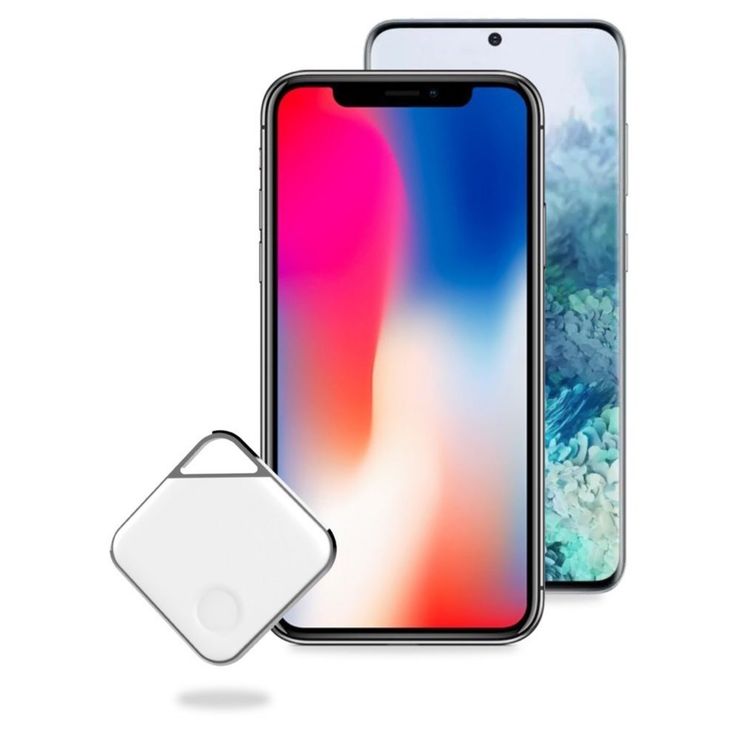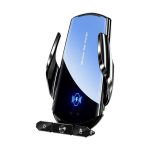In today’s fast-paced digital world, our smartphones serve as essential tools for communication, productivity, and entertainment. However, with increasing usage, many users encounter a common issue: phone overheating. Overheating not only affects your device’s performance but also poses risks to its longevity and safety. Understanding the causes of phone overheating and implementing effective prevention tips can help extend the life of your device and ensure a comfortable user experience. This comprehensive guide explores the common causes of overheating and offers practical strategies to keep your phone running smoothly.

Contents
- 1 Common Causes of Phone Overheating
- 2 The Impact of Overheating on Phone Performance
- 3 Effective Charging Practices to Prevent Overheating
- 4 Optimizing App Usage to Manage Heat
- 5 Managing Environmental Factors to Prevent Overheating
- 6 Recognizing Signs of Overheating
- 7 Long-Term Solutions to Combat Overheating
- 8 Conclusion: Taking Control of Your Device’s Temperature
Common Causes of Phone Overheating
Understanding the various reasons for phone overheating helps you recognize the signs and take proactive measures. One of the primary causes is heavy app usage. Intense or multiple applications running simultaneously can cause your phone’s CPU to work harder, generating excessive heat. Games, navigation apps, and video streaming services are notorious for demanding significant processing power, leading to increased temperatures.
Environmental factors can also contribute significantly to overheating. During hot summer days or in poorly ventilated areas, external heat can raise the temperature of your device. Leaving your phone in direct sunlight or inside a hot car amplifies this effect, often resulting in temporary shutdowns or performance throttling to protect the device.
Battery problems represent another critical factor in phone overheating. As batteries age or become damaged, they may struggle to hold a charge. This inefficiency can produce abnormal heat during regular operations or while charging. Overcharging can also spark issues, as excessive heat generated during charging cycles can harm your battery and device.
Additionally, software issues, such as outdated operating systems or apps, can cause background processes to malfunction and increase battery drain. This unnecessary workload often leads to overheating. Malware or poorly coded applications may also overuse system resources, exacerbating the problem. Understanding these causes empowers users to take appropriate action and reduce the likelihood of overheating.
The Impact of Overheating on Phone Performance
Phone overheating can have cascading effects on device performance and longevity. When your phone gets too hot, it can struggle to function correctly, experiencing slowdowns, lags, and erratic behavior. Applications may crash, and multitasking becomes challenging, limiting your productivity and enjoyment of the device.
Long-term exposure to high temperatures can damage internal components, leading to reduced battery life and efficiency. Overheating can cause batteries to swell, potentially damaging the phone’s casing and rendering the device inoperable. Irreversible damage to processors and chips can also occur, jeopardizing the functionality and lifespan of the smartphone. You may find yourself having to invest in costly repairs or even a new device sooner than expected.
Moreover, the safety risks associated with phone overheating cannot be ignored. High temperatures can lead to battery failure or, in extreme cases, even fires. While incidents of phones catching fire remain rare, ensuring your device operates within safe temperature ranges is crucial. Recognizing signs of overheating, such as a hot back or inconsistent performance, allows you to take preventive action before escalation occurs.
In essence, mitigating the effects of overheating not only enhances your day-to-day experience but also protects your investment in the device. Avoiding this common issue contributes to overall reliability and safety while giving you peace of mind as a user.

Effective Charging Practices to Prevent Overheating
Implementing effective charging habits is vital in preventing phone overheating. One essential practice involves using the original charger and cable that came with your device. Third-party or non-certified chargers may not regulate power flow properly, leading to excessive heat. Always opt for high-quality accessories compatible with your smartphone’s specifications.
Avoid charging your phone overnight or for extended periods. Overcharging can lead to battery stress, heat, and potential long-term damage. Consider using features such as battery optimization modes or bedtime charging settings, found in many modern smartphones, to help manage charging effectively.
Another crucial factor involves charging in environments with appropriate temperatures. Avoid leaving your phone to charge on soft surfaces, such as beds or couches, which can trap heat. Instead, place it on a hard surface where air can circulate freely during the charging process. If your phone heats up during charging, unplug it and allow it to cool before reconnecting.
Additionally, refrain from using your device while it charges. Engaging with resource-intensive apps or games can generate considerable heat. Whenever possible, let your phone charge undisturbed to maximize efficiency and minimize overheating risk.
Optimizing App Usage to Manage Heat
The way you use applications on your phone significantly impacts its temperature. Certain activities generate more heat than others, so understanding how to optimize app usage can help manage overheating effectively. Start by reviewing your background app activity. Many apps continue to run in the background, consuming power and resources. Close unnecessary applications or mute notifications for less important ones to reduce the workload on your device.
Consider limiting your use of high-performance applications. For instance, if you enjoy gaming or streaming videos, opt for lower graphics settings to minimize the strain on your device. Try to use these applications in cooler environments, avoiding outdoor locations or hot rooms.
Regularly install software updates for your operating system and applications. Developers frequently release updates to optimize performance and address bugs. Using outdated apps may lead to increased CPU usage, ultimately causing overheating. By keeping everything up to date, you ensure that your device operates efficiently and reduces unnecessary heat generation.
Additionally, consider disabling location services and Bluetooth when they are not in use. These features continuously search for networks or devices, draining battery power and increasing heat output. By taking control of these settings, you can significantly impact the overall performance and temperature of your phone.

Managing Environmental Factors to Prevent Overheating
Environmental conditions play a significant role in your phone’s temperature regulation. Taking steps to mitigate external heat exposure can help keep your device cool. Always avoid leaving your phone in areas where it is exposed to direct sunlight for extended periods, such as dashboards, window sills, or outdoor settings. When possible, find shaded areas to place your phone when not in use.
Ensure you place your device in well-ventilated areas when using it for prolonged periods. Avoid covering it with layers of clothing or blankets while charging or using resource-intensive applications. Good airflow is essential for maintaining optimal operating temperatures.
Consider the usability of your phone in hot weather. If you have to use your device outdoors, take frequent breaks and allow it to cool down. If necessary, limit usage during peak heat times, such as mid-afternoon, preferring cooler periods in the mornings or evenings.
In addition, using protective cases can help maintain appropriate temperatures. Avoid thick cases that trap heat, especially those designed for heavy drops. Opt for lighter options or cases designed with ventilation. This reduces the chances of overheating and helps prolong the lifespan of your device.
Recognizing Signs of Overheating
Being able to recognize the signs of overheating enables you to take immediate action, preventing damage to your device. Common symptoms include an excessively hot back or screen. If holding your phone becomes uncomfortable due to heat, it is crucial to address the issue promptly.
Another sign of overheating involves performance malfunctions, such as lagging, freezing, or sudden app crashes. If your phone repeatedly behaves abnormally while running resource-intensive applications, take that as a warning sign. At this point, reducing usage or allowing it to cool down becomes critical.
Watch for battery issues as well. If your phone’s battery drains rapidly or fails to hold a charge, overheating may contribute to this problem. Swollen or discolored batteries are serious indications of damage, requiring immediate attention. If you notice any abnormalities, consider reaching out to a professional for assessment and potential replacement.
Finally, do not ignore notification alerts related to device temperature. Many modern smartphones come equipped with built-in protective features that alert users to high temperatures. Follow the prompts and take action to allow the device to cool down.

Long-Term Solutions to Combat Overheating
Implementing long-term solutions for your smartphone can help mitigate overheating issues effectively. Start by keeping your device’s software updated. Regular updates can improve performance, optimize battery management, and resolve bugs that may contribute to overheating. Most smartphones have an automatic update feature, ensuring you stay on top of the latest software.
Consider investing in a quality phone case designed to enhance heat dissipation. Some brands offer cases with built-in ventilation or materials that help regulate device temperatures. These alternatives can significantly improve airflow around your phone, reducing the likelihood of overheating.
Explore using power management applications that help you analyze and control energy consumption on your device. These apps can provide insights into battery performance and help you identify applications causing excessive heat production. Leveraging this information allows for better management of device use and overall energy efficiency.
Regularly cleaning your phone’s internal components and ports can help maintain functionality. Dust and debris can impair performance and generate heat. Cleaning connectors and ensuring good contact between components can reduce heating issues while enhancing overall efficiency.
Finally, consider replacing an old or worn-out battery if overheating persists. Aging batteries often struggle to maintain performance levels, leading to increased heat generation. A new battery can restore functionality and significantly improve temperature regulation.

Conclusion: Taking Control of Your Device’s Temperature
Phone overheating presents various challenges that affect not only device performance but also safety and longevity. By understanding the causes and implementing effective prevention strategies, you can significantly reduce the risk of overheating. Make intentional choices regarding phone usage, charging habits, and environmental considerations to promote optimal function.
Recognizing the signs of overheating and taking immediate action can protect your device and extend its lifespan. Embracing long-term solutions and best practices ensures a more enjoyable user experience, enabling you to fully embrace your smartphone’s capabilities.
Ultimately, educating yourself about the potential issues and solutions associated with phone overheating empowers you to take control. With the right knowledge and proactive measures, you will keep your phone operating smoothly, improve its longevity, and enjoy technology without the frequent disruptions of overheating concerns.

